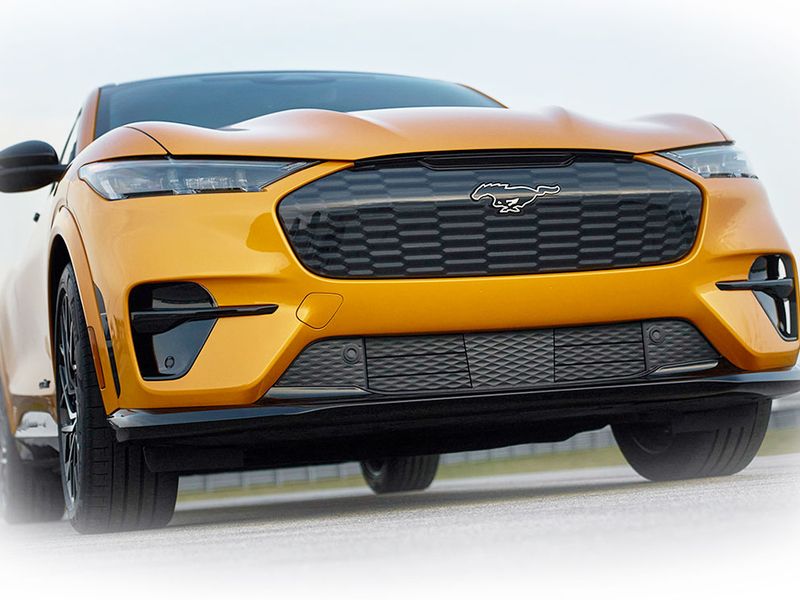
Editor’s note: The Chicago auto show took place in February 2020. An earlier version of this story misstated the status of the show just prior to the pandemic.
Nothing could be crazier than 2020, we all innocently thought as Kia towed the big “2021” numerals into an empty Times Square.
Back then, chips were just tasty but unhealthy snacks. Cars and trucks lost value when they left the dealership lot. Nobody could recite the Greek alphabet. Elon Musk was only the world’s third-richest person.
In the decades that passed this year, Tesla became a trillion-dollar company. Public dealership groups bought up stores like early-pandemic toilet paper. We kind of got used to saying “Stellantis.”
And then there’s the global microchip shortage, which the Automotive News staff chose as the top story of 2021 in a landslide. Remember when dealerships used to have more than six new cars on the acres of asphalt surrounding their showroom? Remember when car shoppers scoffed that only suckers pay sticker? Remember incentives?
What fresh insanity will 2022 bring? Buckle up, turn on your heated seats (non-General Motors customers only) and get ready to find out. In the meantime, here are the biggest stories of 2021, as voted on by the Automotive News staff for a 69th consecutive year.
Dealerships had plenty of customers ready to buy, but little to sell them because automakers couldn’t get enough of the microchips that are critical to today’s highly computerized vehicles. As plants added downtime and inventories dried up, incentives evaporated and transaction prices soared. On some in-demand models, dealers began marking up window stickers by tens of thousands of dollars. GM and other automakers decided to remove popular features such as heated seats so that assembly lines could keep running. An upside: Dealerships raked in record profits for a second consecutive year.
A new era of dealership consolidation dawned in 2021, as the big groups got bigger and more small dealers decided to walk away. Notable transactions include Lithia Motors buying the Suburban Collection, the Larry H. Miller Group selling to Asbury Automotive, Group 1 absorbing Prime Automotive and Sonic Automotive taking ownership of RFJ Auto Partners Holdings. It was the biggest year for dealership mergers and acquisitions in decades, and buy-sell advisers say more blockbuster deals are likely just around the corner.
Electric vehicles still make up just a tiny fraction of overall U.S. auto sales, but that percentage has begun rising quickly as more battery-powered options have come onto the market. Tesla became one of the top-selling luxury brands in the U.S. in 2021, but it’s also facing more competition than ever as the Ford Mustang Mach-E and other new EVs have started eroding Tesla’s share. Ford said it already needs to double its EV production capacity over the next two years to keep up with demand. To help consumers feel more comfortable that an EV will fit their lifestyle and blunt one of Tesla’s advantages, several major automakers upped their investment in charging infrastructure.
As new variants of the coronavirus popped up, companies repeatedly delayed plans to bring workers back to offices in person. Ford Motor Co. told 30,000 employees that they could continue working from home indefinitely. There were sporadic disruptions within the automotive supply chain, but outbreaks within companies were rare. The Detroit 3 required their Canadian employees to be vaccinated but didn’t go that far in the U.S. Auto shows in Chicago and Los Angeles took place, but Detroit and New York went another year without their shows. Some shows — including Geneva, Toronto and Montreal — already have been canceled for 2022.
With new vehicles in short supply, used prices shattered record highs in 2021. Dealers scoured the market for inventory they could use to fill the empty spaces in front of their showrooms, in some cases paying the original sticker price or more for 1- or 2-year-old models. Consumers who bought a used car a year or two ago found that they could resell it for a profit, and lessees discovered a rare chance to cash in on thousands of dollars in unexpected equity, leading several automakers to bar end-of-lease purchase through other brands’ dealers.
This was the year when automakers drew lines in the sand and declared that the days of the internal combustion engine are numbered. GM said it wants to sell only zero-emission light vehicles by 2035. Volvo, Mercedes-Benz and Cadillac revealed aspirations to be fully electric by 2030. Even if automakers want to keep selling gasoline-powered cars beyond that, they’ll have fewer places to do so. California, New York City, Canada and the European Union all aim to phase out combustion vehicles by 2035.
In his first full year as CEO, Jim Farley energized Ford with concrete plans for EVs such as the F-150 Lightning, which has nearly 200,000 reservations, and hugely profitable commercial vehicles. Ford announced its biggest manufacturing investment in company history to build Blue Oval City in Tennessee and battery plants in Kentucky. It hired the head of Apple’s car project, Doug Field, to guide the emerging technology and connectivity efforts under Farley’s “Ford+” plan. Even Wall Street is finally buying in, with shares of Ford reaching a 20-year high.
Carlos Tavares melded the ruggedness of Jeep and Ram with the efficiency of Peugeot and Citroen to create the world’s fourth-largest automaker. The new company has seen profitability improve, and Tavares said he’ll give all 14 of the company’s brands a decade to prove themselves, sparing Chrysler and others that were thought to be on the chopping block. U.S. dealers, who have been through a litany of mergers over the years, say the latest tie-up already is creating a culture that’s more focused on satisfying customers than just selling as many vehicles as possible.
After becoming the most valuable automaker in the world in 2020, Tesla became more valuable than the next 10 automakers combined in 2021. It’s just the sixth company in history to boast a market cap of more than $1 trillion, and the soaring stock price made Musk the world’s richest person. The EV maker posted an eighth consecutive quarterly profit. At the same time, the company has been under investigation by federal regulators for its Autopilot and Full Self-Driving software after a number of crashes in which the car didn’t see a stopped vehicle. That scrutiny didn’t rattle investors, nor did it stop Time magazine from naming Musk its Person of the Year.
The Ford Maverick and Hyundai Santa Cruz bucked the trend of pickups getting bigger and brawnier year after year. With sedans falling out of favor, Ford and Hyundai saw an opening to bring back small trucks aimed at consumers who just want a vehicle that’s affordable and utilitarian. Both trucks have been so popular in the early going that they spend only a handful of days on a dealership lot before going home with a customer, many of whom are young and new to pickups.

